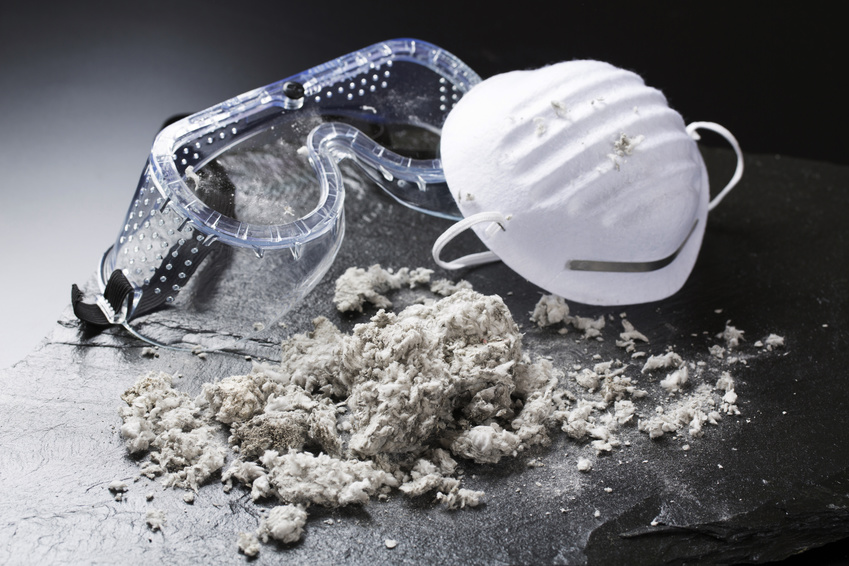Asbestos has been used widely in the construction industry in the UK since the nineteenth century until the 80s and 90s when it was gradually banned. However, construction workers can still be exposed and endangered if they are working on buildings that were built prior to the ban and they disturb the asbestos without knowing it was there. According to the Health and Safety Executive website asbestos kills 5000 workers a year. Therefore it is vital to include looking for asbestos in any building inspection that gets carried out before work on a project begins.
Asbestos was used for fireproofing, strengthening cement, thermal insulation and sound absorption to name a few. Asbestos becomes dangerous when the fibres become damaged whereupon they are released into the air with a danger of being breathed in by construction workers and members of the public. These fibres can stay in your lungs for years without any signs of symptoms but if the exposure was big enough or continuous then eventually they can start to affect your breathing and lead to much more dangerous diseases.
Mesothelioma – the most common cancer that is connected with contact with asbestos. This is a cancer of the lining tissue of the lungs, heart or abdomen and is incredibly aggressive.
- Abdominal – Swelling in the stomach due to fluid build-up, loss of appetite, stomach pain, weight loss
- Lungs – A persistent cough, chest pain, lack of energy, shortness of breath, fluid build-up in the chest
- Heart – Fever, weight loss, chest pain, heart palpitations, shortness of breath
Asbestosis – This is developed when the inhaled asbestos fibres scar the lungs resulting in the scars restricting breathing and impedes oxygen getting into the bloodstream.
If you believe you have been exposed to asbestos talk to your GP and follow existing health and safety protocol. Remember that symptoms of an asbestos-related disease take years to develop.
Anomaly Hi-Vis can project bespoke warnings and protocol regarding the specific dangers of each site they are used on.
For more information please visit: www.hse.gov.uk/asbestos

